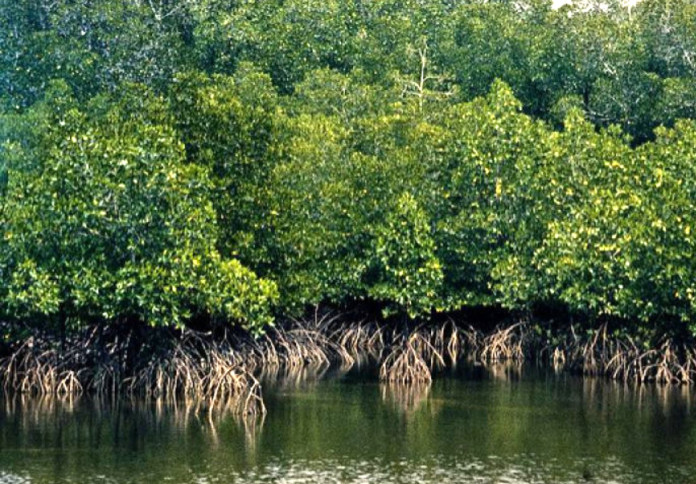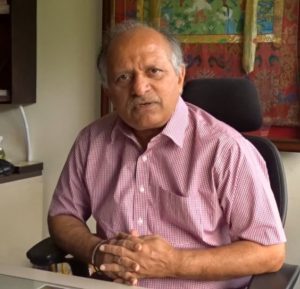Godrej & Boyce, the flagship company of the Godrej Group, has announced the launch of the India Mangroves Coalition, in association with CII’s Centre of Excellence for Sustainable Development (CII-CESD) and WWF India recently. The Mangroves Coalition is meant to strengthen the commitment of corporate India towards preserving vital coastal ecosystems.
This new initiative is expected to drive collaboration across CII member companies and help identify new solutions for mangrove management and conservation through research and innovation.
The India Mangroves Coalition is the first of its kind industry-led platform under CII’s India Business & Biodiversity Initiative (IBBI), that will support and propagate greater mangrove conservation and plantation across India’s vast coastline through a multi-stakeholder approach, based on its importance as a Blue Carbon system.
- The India Mangroves Coalition will act as a catalyst for actions towards greater mangrove conservation
- It will provide a platform to bring all stakeholders to nurture and protect these Blue Carbon ecosystems
Coastal forests like mangroves are emerging as a key solution to alleviate the problem of accelerating global warming and other adverse climate events like increased storm and cyclonic activity across the globe that are impacting lives and livelihoods. Dubbed “Blue Carbon” systems for their greater ability to absorb carbon, mangrove forests have been proven to not only store up to five times as much carbon as terrestrial forests, but also sequester or trap the carbon for much longer periods of time of up to thousands of years. Blue carbon systems like mangroves will have to play a bigger role in carbon absorption if the world must meet its goal to limit global warming to 1.5 degrees by 2050.
Dr. Ravi Singh, Director, WWF India, believes that the consortium will be an effective way to achieve larger objectives related to mitigating climate change.
The Coalition aims to bring the latest scientific and technological developments to the fore by engaging with experts from government, academia and other organisations focused on climate change to provide insights and help members adopt leading-edge techniques to further mangrove conservation.
Godrej & Boyce said it has been a pioneer in balancing industrial growth alongside conservation of nature since 1940. The Soonabai Pirojsha Godrej Foundation was founded in 1985 to formalize efforts towards the conservation of a stretch of Mumbai’s mangroves ecosystem from Vikhroli along the west bank of the Thane creek. The Soonabai Pirojsha Godrej Marine Ecology Centre was also founded in 1985 with eminent founder members like the late Dr. Salim Ali renowned ornithologist, A.K. Ganguly renowned botanist and Dr. Homi Bhabha renowned scientist to focus further efforts on conservation of the surrounding marine ecosystem under the mangrove cover.
The mangroves protected by G&B and the Godrej foundations are India’s first ISO 14001 certified forest in 1997. This certification has ensured time bound, measurable performance indicators and targets for conservation initiatives. To ensure dedicated focus to the issues, Godrej & Boyce has established a dedicated Wetlands Management Services (WMS) organisation with skilled professionals and has been undertaking significant conservation and renewal initiatives with a three-pronged strategy of promoting academic research, driving conservation and building awareness about the importance of these Blue Carbon systems.
Working with multiple stakeholders the WMS team has engaged with almost 60,000 individuals living in coastal areas in the last six years through on-site and off-site programs using a dedicated mangroves mobile app, online webinars, story books, poster exhibitions and has released a mangrove quiz in Marathi on www.mangroves.godrej.com in its efforts to increase awareness through outreach in regional languages.
The Soonabai Pirojsha Godrej Foundation has also planned and implemented additional mangrove plantation of approximately 80 acres at its southern border for the Municipal Corporation of Greater Mumbai. This was the first of its kind successful public-private partnership for large-scale mangrove plantation in India.
Mangroves Sequester 4 Times More Carbon
Mangroves are the only “triple win” solution: they protect humans from natural calamities, can sequester four times more carbon than rainforests, and sustain the livelihoods of artisanal fishing communities. Mangroves also break down complex pollutants into nutrients and use these for their growth thereby reducing pollution levels. Their dense root network act as natural filters for chemical pollutants to reduce water pollution.
Mangroves are one of only three marine ecosystems—alongside saltmarsh and seagrass—currently recognized by the Intergovernmental Panel on Climate Change as methodologies that can make measurable contributions to help a country reduce its emissions. In total around 33 billion tonnes of carbon dioxide (about three-quarters of the world’s emissions in 2019) are locked away in the planet’s blue-carbon sinks. Mangrove ecosystems are currently being lost at estimated rates of about 0.6 percent per year, down from previous loss rates of around 1 to 2 percent per year.











